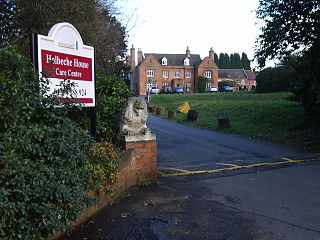
Guy Fawkes, also known as Guido Fawkes while fighting for the Spanish, was a member of a group of provincial English Catholics who was involved in the failed Gunpowder Plot of 1605. He was born and educated in York; his father died when Fawkes was eight years old, after which his mother married a recusant Catholic.

The Gunpowder Plot of 1605, in earlier centuries often called the Gunpowder Treason Plot or the Jesuit Treason, was a failed assassination attempt against King James I by a group of provincial English Catholics led by Robert Catesby who sought to restore the Catholic monarchy to England after decades of persecution against Catholics.

Robert Cecil, 1st Earl of Salisbury,, was an English statesman noted for his direction of the government during the Union of the Crowns, as Tudor England gave way to Stuart rule (1603). Lord Salisbury served as the Secretary of State of England (1596–1612) and Lord High Treasurer (1608–1612), succeeding his father as Queen Elizabeth I's Lord Privy Seal and remaining in power during the first nine years of King James I's reign until his own death.

Robert Catesby is the supposed leader of a group of English Catholics who was accused of a conspiracy to destroy Parliament in 1605, known as the Gunpowder Plot.
Francis Tresham, eldest son of Thomas Tresham and Merial Throckmorton, was a member of the group of English provincial Catholics who planned the failed Gunpowder Plot of 1605, a conspiracy to assassinate King James I of England.
John, Johnny, or Johnnie Wright may refer to:

Ashby St Ledgers is a village in the West Northamptonshire district of Northamptonshire, England. The post town is Rugby in Warwickshire. The population of the civil parish at the 2011 census was 173. The Manor House is famous for being a location for the planning of the Gunpowder Plot in 1605.

Thomas Percy was a member of the group of provincial English Catholics who planned the failed Gunpowder Plot of 1605. A tall, physically impressive man, little is known of his early life beyond his matriculation in 1579 at the University of Cambridge, and his marriage in 1591 to Martha Wright. In 1596 his second cousin once removed, Henry Percy, 9th Earl of Northumberland, appointed him constable of Alnwick Castle and made him responsible for the Percy family's northern estates. He served the earl in the Low Countries in about 1600–1601, and in the years before 1603 was his intermediary in a series of confidential communications with King James VI of Scotland.
Gunpowder or "black powder" is a propellant used in early firearms.
Chris or Christopher Wright may refer to:
Thomas Percy may refer to:

The Gunpowder Plot: Exploding the Legend was a British television show, hosted by Richard Hammond that recreated elements of the Gunpowder Plot in which Guy Fawkes attempted to blow up the House of Lords.

John (Jack) Wright, and Christopher (Kit) Wright, were members of the group of provincial English Catholics who planned the failed Gunpowder Plot of 1605, a conspiracy to assassinate King James I by blowing up the House of Lords. Their sister married another plotter, Thomas Percy. Educated at the same school in York, the Wrights had early links with Guy Fawkes, the man left in charge of the explosives stored in the undercroft beneath the House of Lords. As known recusants the brothers were on several occasions arrested for reasons of national security. Both were also members of the Earl of Essex's rebellion of 1601.

Holbeche House is a mansion located approximately 1 mile (1.6 km) north of Kingswinford, now in the Metropolitan Borough of Dudley but historically in Staffordshire. Some members of the Gunpowder Plot were either killed or captured at Holbeche House in 1605.
The Gunpowder Plot was a failed assassination attempt against King James VI of Scotland and I of England by a group of provincial English Catholics led by Robert Catesby. The conspirators' aim was to blow up the House of Lords at the State Opening of Parliament on 5 November 1605, while the king and many other important members of the aristocracy and nobility were inside. The conspirator who became most closely associated with the plot in the popular imagination was Guy Fawkes, who had been assigned the task of lighting the fuse to the explosives.
Guy Fawkes is a 1923 British silent historical film directed by Maurice Elvey and starring Matheson Lang, Nina Vanna and Hugh Buckler. The film depicts the Gunpowder Plot of 1605 in which a group of plotters planned to blow up the Houses of Parliament. It was based on the 1840 novel Guy Fawkes by Harrison Ainsworth.

Gunpowder is a British historical drama television miniseries produced by Kudos and Kit Harington’s Thriker Films for BBC One. The three-part drama series premiered on BBC One in the United Kingdom on 21 October 2017 and on HBO in the United States on 18 December 2017.
This page is based on this
Wikipedia article Text is available under the
CC BY-SA 4.0 license; additional terms may apply.
Images, videos and audio are available under their respective licenses.









